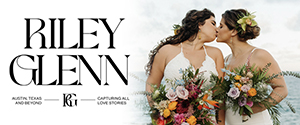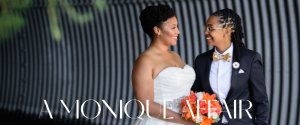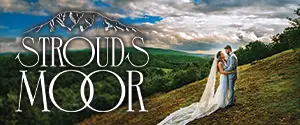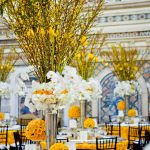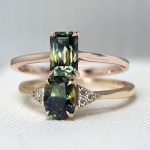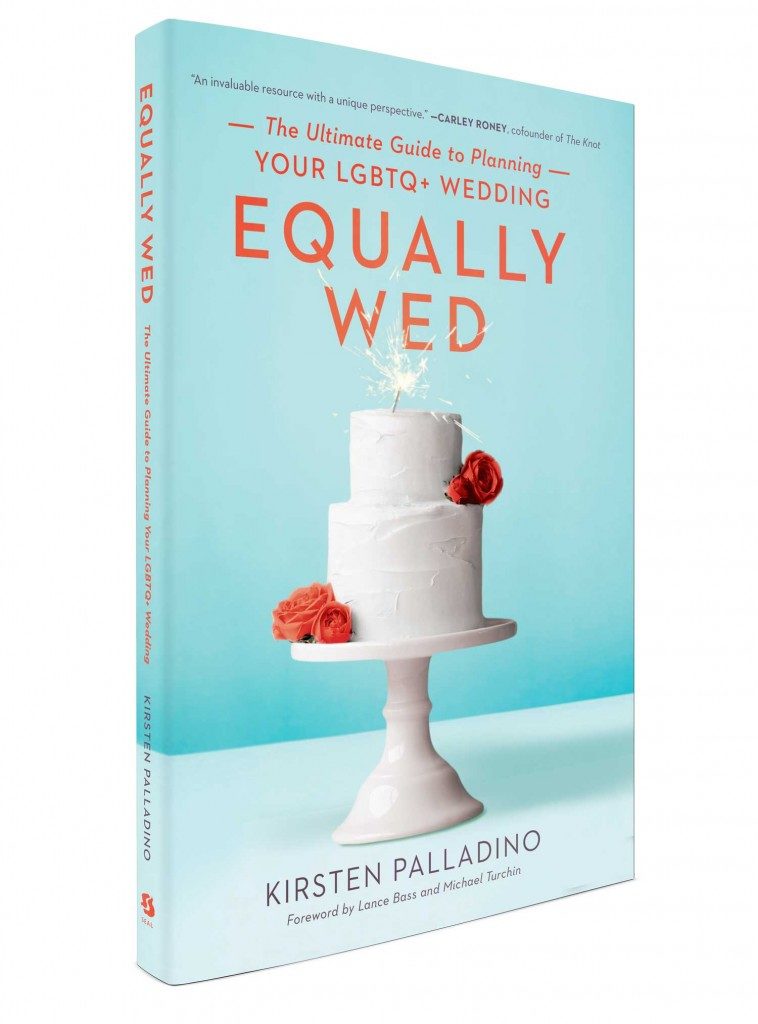Pattern Play
We show brides and grooms how to move beyond the standard suit and incorporate personality with patterns into their wedding day style.
By Brittny Drye
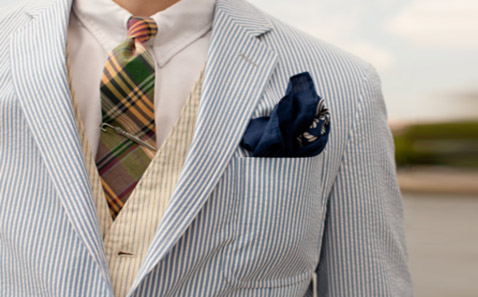
Many brides and grooms are moving beyond the traditional tuxedo or black-and-white conference room suit for their wedding day ensemble, adding splashes of personality with patterns, and if the recent Spring 2013 menswear fashion shows are any indication, prints and patterns will sprinkle black-and-white palettes for at least another year. “Patterns are one of the best ways to express oneself through clothing,” explains Grant Harris, owner and chief style consultant at Image Granted, a Washington, D.C.-based fashion consulting company. “In any given outfit there should always be three things present: color, texture and not least of all pattern. Without the visual texture of pattern one is left to wear solids which can only do so much to enhance one’s physical features. In the end pattern is paramount.”
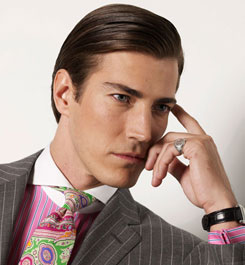
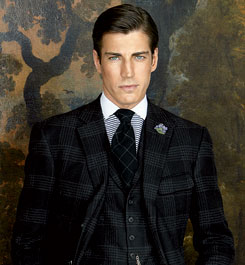
 Simplify the Scale: “One of the biggest mistakes committed by those who choose to wear patterns regularly is not accounting for scale,” says Harris. Patterns come in different sizes and they should complement and enhance each other rather than confuse the eye of the viewer. “When wearing two or more patterns ensure that one pattern is either larger or smaller than the other in order to create visual depth,” he advises. “Wearing two patterns of the same scale whether they are small, medium or large, will only create a vast landscape to which the viewer’s eye has no reference point.” If you dare to double up, balance scale out by wearing a large pattern in a jacket and a small pattern in a shirt, drawing in the viewer’s eye versus repelling it away.
Simplify the Scale: “One of the biggest mistakes committed by those who choose to wear patterns regularly is not accounting for scale,” says Harris. Patterns come in different sizes and they should complement and enhance each other rather than confuse the eye of the viewer. “When wearing two or more patterns ensure that one pattern is either larger or smaller than the other in order to create visual depth,” he advises. “Wearing two patterns of the same scale whether they are small, medium or large, will only create a vast landscape to which the viewer’s eye has no reference point.” If you dare to double up, balance scale out by wearing a large pattern in a jacket and a small pattern in a shirt, drawing in the viewer’s eye versus repelling it away.
The Rule of Three: The human eye can only comprehend and digest so many patterns at a time, so, for the sake of the guests and your sweetheart, keep patterns at a minimum. “Even the most advanced dressers limit their pattern variance to no more than three or four patterns at one time, much less five or six,” explains Harris. His recommendation? The rule of three. “Mitigate the number of patterns to no more than three at one time.”
Patterns Are Personal: Pick a pattern that suits both your body frame and personality. “The most important considerations before donning a patterned suit is if it aligns with your body type and overall lifestyle,” says Harris. “Big and bold patterns may not work best for a person of slight stature and meek character. On the other hand a subtle and small pattern may not work best for a person of large stance with an even larger personality. The pattern must match the wearer in tone and texture.”
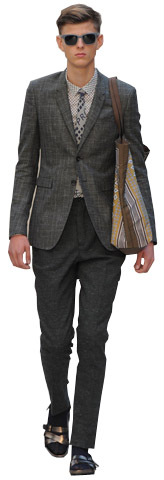 Fashion Fundamentals: While we applaud avante-garde fashion, old school rules still apply. “Matching the appropriate pattern to the occasion is key,” Harris notes. “Wearing a paisley dinner jacket in the middle of the day will look heavily out of place, while on the other hand wearing a gun check shooting jacket would look sorely conspicuous during the evening.”
Fashion Fundamentals: While we applaud avante-garde fashion, old school rules still apply. “Matching the appropriate pattern to the occasion is key,” Harris notes. “Wearing a paisley dinner jacket in the middle of the day will look heavily out of place, while on the other hand wearing a gun check shooting jacket would look sorely conspicuous during the evening.”
Covering the Curves: Harris recommends incorporating elongating patterns for brides looking to conceal their feminine assets in the chest and hip areas. “Pinstripes, herringbones, tonals and variegated stripes will suit you best,” he says. “These will lengthen and slim the body instead of widening it in areas where it is least wanted.” He adds that subtle and soft patterns are more desirable than loud and brash ones. “This way the viewer’s eye will not recognize the pattern from afar but will slowly and gradually pick up the sight of the pattern as they approach which will also minimize the effect of mass in the area.”
Beef Up the Build: Forget shoulder pads and fake the frame with larger, louder and more pronounced patterns, such as windowpanes, buffalo plaids, ginghams, paisleys, tartans, etc. “Women who are slight of build in the hips and/or the chest will want to enhance their frame by adding large and loud patterns, which will trick the viewer’s eye into believing there is more body mass present than there actually is.”
Where to Start: There is no wrong choice when it comes to picking where you place your pattern. “Each piece is an entity on its own until it is molded together with the other,” explains Harris. “Some people like to start with the shirt. Others, the tie. Still others, the jacket. The recommendation is to pick your starting point and build the rest from there. The last thing you want to do is try to pick several things at once in all different patterns. This will only cause you stress in the long run.”




